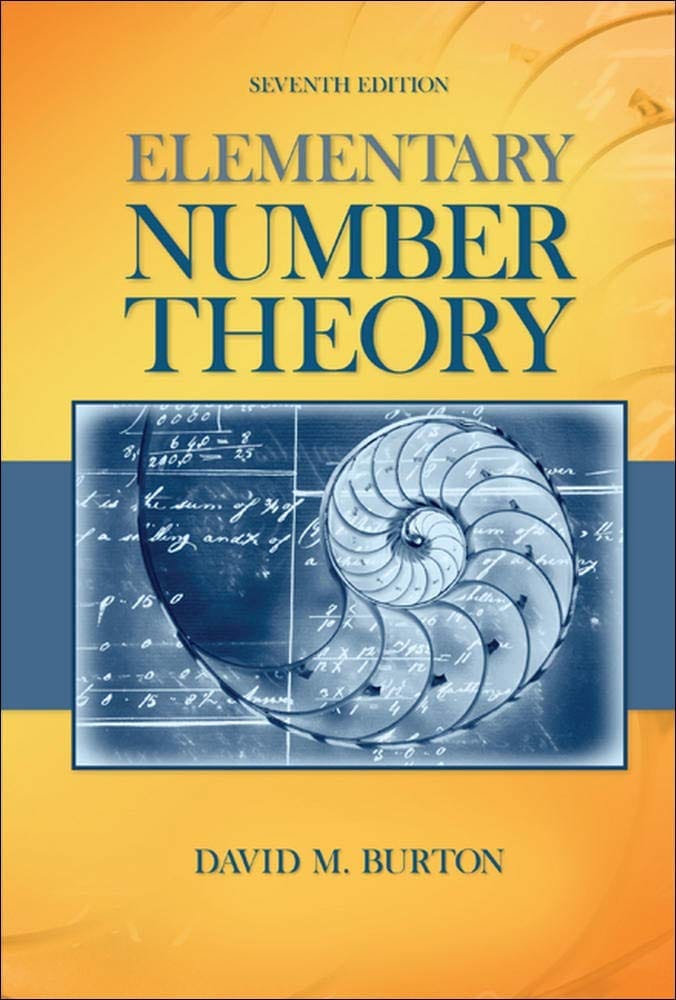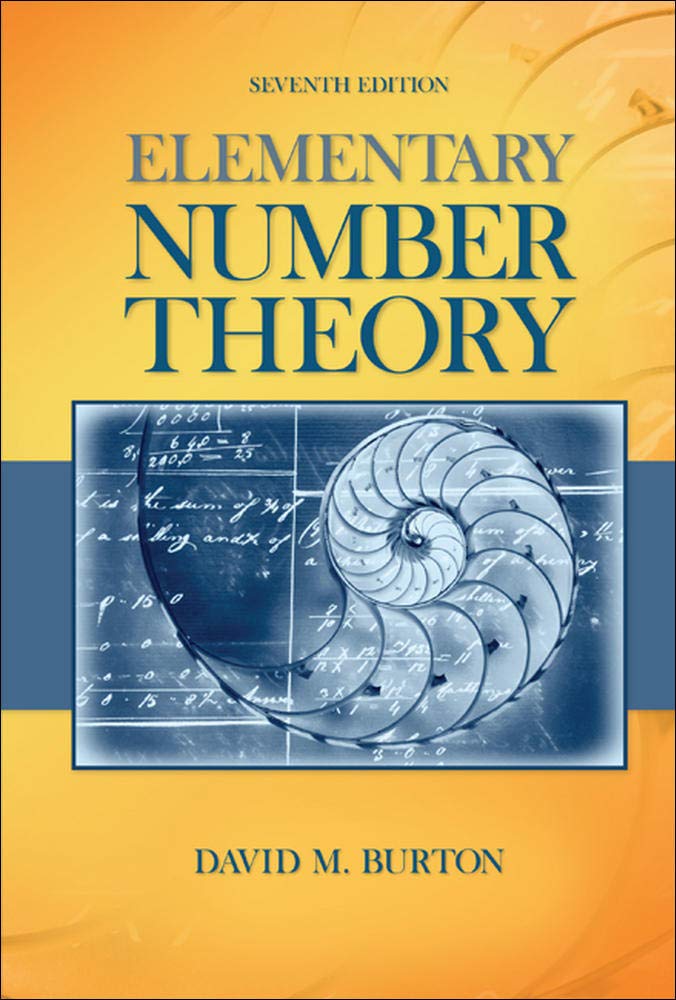
Elementary Number Theory Problems 4.3 Solution (David M. Burton's 7th Edition) - Q7
Establish the following divisibility criteria: (a) An integer is divisible by $2$ if and only if its units digit is $0, 2, 4, 6,$ or $8$. (b) An integer is divisible by $3$ if and only if the sum of its digits is divisible by $3$. (c) An integer is divisible by $4$ if and only if the number...
Table of Contents
Background
All theorems, corollaries, and definitions listed in the book's order:

I will only use theorems or facts that are proved before this question. So, you will not see that I quote theorems or facts from the later chapters.
Question
Establish the following divisibility criteria:
(a) An integer is divisible by $2$ if and only if its units digit is $0, 2, 4, 6,$ or $8$.
(b) An integer is divisible by $3$ if and only if the sum of its digits is divisible by $3$.
(c) An integer is divisible by $4$ if and only if the number formed by its tens and units digits is divisible by $4$.
[Hint: $10^{k} \equiv 0 \pmod {4}$ for $k \geq 2$.]
(d) An integer is divisible by $5$ if and only if its units digit is $0$ or $5$.
Solution
(a)
Let $N$ be the integer and we can write $N = a_{m}10^{m} + a_{m - 1}10^{m - 1} + \cdots + a_{2}10^{2} + a_{1}10 + a_{0}$. By Theorem 4.4, we have $10 \equiv 0 \pmod {2}$, so $N = P(10) \equiv P(0) \equiv a_{0} \pmod {2}$. It follows that $N \equiv 0 \pmod {2}$ if and only if $a_{0} \equiv 0 \pmod {2}$. As $a_{0}$ is the units digit, it will only be $0, 2, 4, 6,$ or $8$ when it is divisible by $2$.
Therefore, an integer is divisible by $2$ if and only if its units digit is $0, 2, 4, 6,$ or $8$.
(b)
Let $N$ be the integer and we can write $N = a_{m}10^{m} + a_{m - 1}10^{m - 1} + \cdots + a_{2}10^{2} + a_{1}10 + a_{0}$. By Theorem 4.4, we have $10 \equiv 1 \pmod {3}$, so $N = P(10) \equiv P(1) \equiv a_{m} + a_{m - 1} + \cdots + a_{2} + a_{1} + a_{0} \pmod {3}$. It follows that $N \equiv 0 \pmod {3}$ if and only if $a_{m} + a_{m - 1} + \cdots + a_{2} + a_{1} + a_{0} \equiv 0 \pmod {3}$.
Therefore, an integer is divisible by $3$ if and only if the sum of its digits is divisible by $3$.
(c)
Let $N$ be the integer and we can write $N = a_{m}10^{m} + a_{m - 1}10^{m - 1} + \cdots + a_{2}10^{2} + a_{1}10 + a_{0}$. We know that $10^{k} \equiv 0 \pmod {4}$ for $k \geq 2$. Thus $N \equiv a_{1}10 + a_{0} \pmod {4}$. It follows that $N \equiv 0 \pmod {4}$ if and only if $a_{1}10 + a_{0} \equiv 0 \pmod {4}$.
Therefore, an integer is divisible by $4$ if and only if the number formed by its tens and units digits is divisible by $4$.
(d)
Let $N$ be the integer and we can write $N = a_{m}10^{m} + a_{m - 1}10^{m - 1} + \cdots + a_{2}10^{2} + a_{1}10 + a_{0}$. By Theorem 4.4, we have $10 \equiv 0 \pmod {5}$, so $N = P(10) \equiv P(0) \equiv a_{0} \pmod {5}$. It follows that $N \equiv 0 \pmod {5}$ if and only if $a_{0} \equiv 0 \pmod {5}$. As $a_{0}$ is the units digit, it will only be $0$ or $5$ when it is divisible by $5$.
Therefore, an integer is divisible by $5$ if and only if its units digit is $0$ or $5$.
Read More: All My Solutions for This Book
Related Pages
Ranblog Newsletter
Join the newsletter to receive the latest updates in your inbox.


